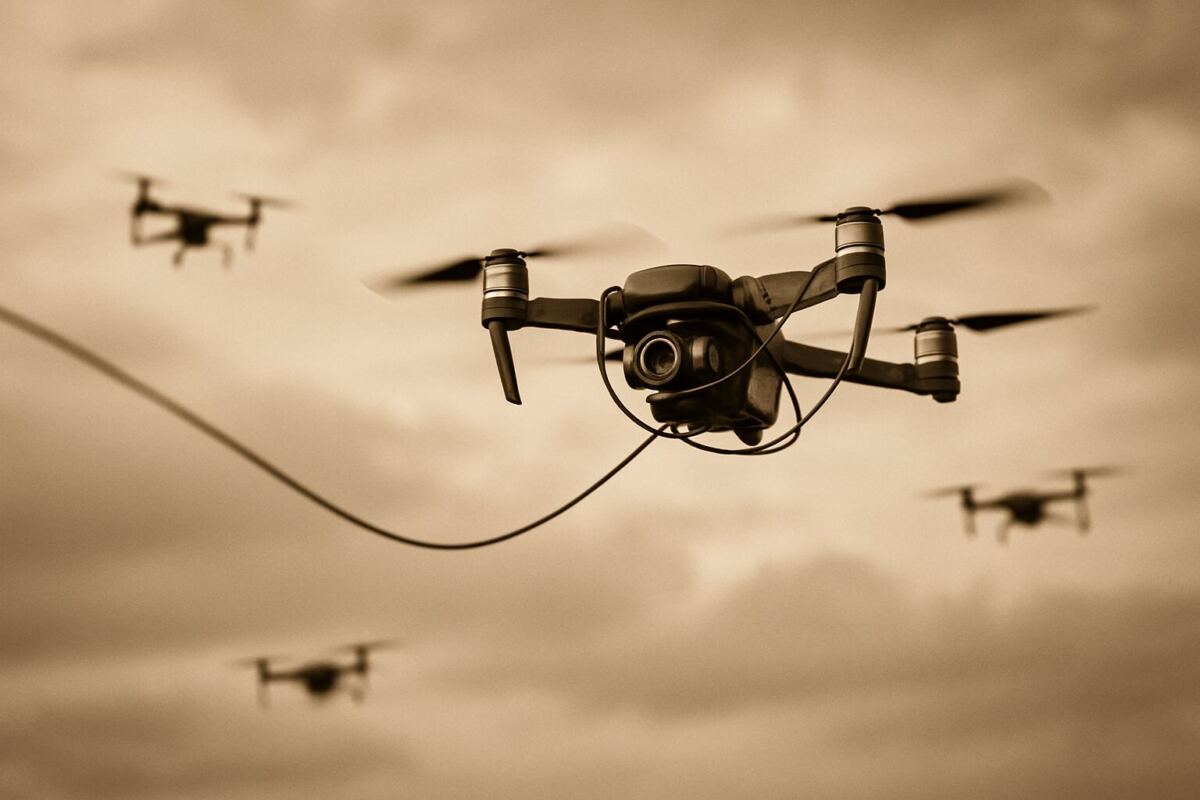Company secures $4.5M to accelerate Merlin-1 and PAN-DA as global C-UAS demand climbs toward $6.8B
The global market for counter-unmanned aircraft systems (C-UAS) is set to more than triple by 2030, climbing from $1.9 billion to $6.8 billion. Fueling that growth is the spread of cheap, agile drones, which have become both weapons of choice in war zones and headaches for domestic security agencies. Yet most drone defense systems today are expensive, bulky, or built for militaries, not the smaller patrols and operators facing these threats in real time.
Miami-based Wrap Technologies (NASDAQ: WRAP) is positioning itself to meet that demand head-on. Best known for its BolaWrap pre-escalation device carried by more than 1,000 police agencies worldwide, the company is expanding into defense with two new counter-drone systems that repurpose its tether-based technology for the skies.
A Proven Platform Reimagined
Wrap’s flagship BolaWrap 150 is a handheld pre-escalation tool carried by officers to create a critical window of time before situations turn to higher levels of force. Instead of relying on pain or incapacitation, the device deploys a Kevlar tether while triggering a multi-sensory disruption — using sight, sound, and tactile sensation — to momentarily break a subject’s focus. That pause allows officers to intervene more safely and strategically.
Wrap realized the same Kevlar-corded system that powers the BolaWrap could just as easily be aimed skyward. Fire a tether at a low-flying drone and you can foul its rotors mid-air, forcing it down intact.
Aerial Payload Turns BolaWrap Into Drone Defense
At the center of the expansion is Wrap-Merlin 1, a modular payload that mounts on a first-person-view (FPV) drone. It can carry up to six BolaWrap cassettes, each capable of entangling and disabling a hostile drone in mid-flight.
“Wrap-Merlin 1 is expected to transform the BolaWrap from a ground-based tool into an airborne defensive asset,” said Michael Brown, Wrap’s Vice President of Products. “It’s designed to be adaptable, deployable in short order, and reloadable — offering operators a cost-effective alternative to current counter-drone solutions.”
Merlin-1 is designed for integration with Department of Defense Blue UAS-approved platforms, NATO-aligned drones, and commercial security systems. Its open architecture and 3D-printable mounts mean operators can tailor the system for specific missions and field it in days rather than months, a key advantage as drone tactics evolve faster than traditional procurement cycles.
Unlike single-use interceptors, the payload can deliver multiple engagements per sortie, making it attractive for defense agencies, border security units, or infrastructure protection teams that need sustained coverage at lower cost.
A Handheld Shield for Soldiers on the Ground
Shortly after unveiling Merlin-1, Wrap introduced its second C-UAS program, Project PAN-DA (Personal Anti-Drone Armament). Where Merlin-1 looks to intercept drones mid-air, PAN-DA is a quick-reaction, handheld device meant for soldiers or operators facing drones at close range.
The system adapts the BolaWrap platform to fire Kevlar tethers skyward, entangling rotors before a drone can strike. Compact enough to carry on a belt, it is designed to be reloadable and capable of multiple engagements per unit. Wrap has already released a Phase One proof-of-concept video showing the system in action.
“PAN-DA builds on the proven BolaWrap platform, which we believe will give operators a lightweight, reliable, and non-lethal means of defending themselves and their environment from drone threats,” Brown explained.
Jared Novick, Wrap’s President and Chief Operating Officer, added: “We’re proud to focus our efforts on applying our trusted BolaWrap device in a new way, while staying true to the same mission. With Project PAN-DA, we are aiming to develop another life-saving product that expands our ability to protect lives and respond to emerging threats.”
Expanding Into a High-Growth Market
Rising incidents of drone incursions are fueling investment in the C-UAS sector.
Many established players, including AeroVironment and Kratos Defense, have built counter-drone businesses around jamming or destruction with missiles and lasers. Australia’s DroneShield has a half-billion-dollar pipeline for its detection and electronic warfare products. Wrap, by contrast, is betting on a narrower niche: reusable, kinetic interceptors designed for portability and cost efficiency.
Unlike missile interceptors or single-use drones, Wrap’s systems are built to be reloadable, giving operators multiple shots without the financial and logistical burden of replacing entire systems after each use. The company also has an unusual advantage, given its ability to leverage the same BolaWrap technology already manufactured at scale for law enforcement, meaning they can enter the defense market without starting from scratch on supply chains or production.
“This marks an entirely new application for BolaWrap technology,” said Novick. “By taking our proven Kevlar-corded system into the air, we’re addressing an urgent need in drone defense with a capability that we believe is affordable, adaptable, and immediately relevant to both domestic and international missions.”
$4.5M to Accelerate Development
To advance its defense expansion, Wrap recently secured $4.5 million in a private placement. According to the company, proceeds will speed up development of the Merlin-1 and PAN-DA programs and reinforce its ‘dual-use’ strategy of growing law enforcement sales alongside new federal contracts.
The financing also supports Wrap’s subscription-based offerings and ecosystem of public safety technologies, including WrapVision body cameras and WrapReality training systems. Management believes this diversified approach positions the company to scale more quickly in both domestic policing and international defense markets.
Scaling a Trusted Platform for Emerging Threats
While the BolaWrap was originally designed as a pre-escalation tool for officers, the same tether technology is now being re-engineered to combat aerial threats.
Development testing for both Merlin-1 and PAN-DA is underway, with Wrap focusing on refining range, interoperability, and multi-engagement performance. The company says rapid iteration and compatibility with existing systems are central to its approach.
If Wrap can demonstrate real-world effectiveness and win procurement contracts, its BolaWrap technology may soon serve not only as a non-lethal tool for officers on the ground but as a defensive asset for soldiers and security personnel confronting drones in the sky.
For a small-cap company already known for disrupting policing tools, the move into C-UAS offers a shot at carving out space in one of defense tech’s fastest-growing markets.








